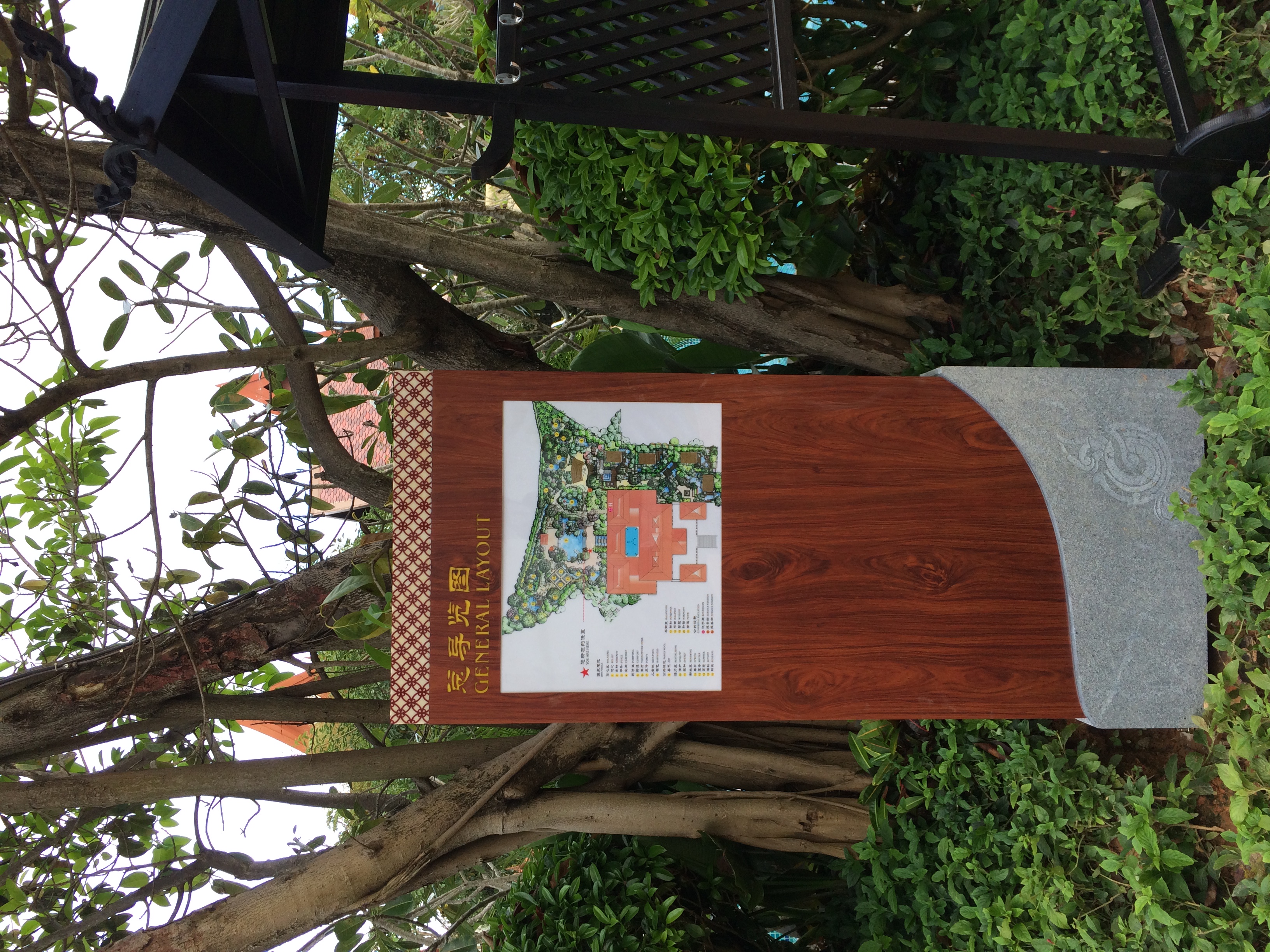The ultimate goal of logo design is to visually convey and disseminate information. So when selecting materials, the first thing to consider is the concept of visual effects and performance. For example, to express traditional culture and natural simplicity, it is necessary to consider using materials such as wood and stone that are easy to express style; To have a sense of the times, a unique and innovative personality, consider using acrylic panels, fiberglass, stainless steel, aluminum-plastic panels, PVC panels, sunlit panels, fluorocarbon panels, etc.
The use of wood has a long history. Wood was naturally the preferred material for designers at that time. Today, due to the influence of historical and natural factors, deformed wooden materials are widely used in some tourist scenic areas such as gardens, zoos, and parks. The feeling it gives is natural and friendly, with a return to tradition.

However, wood often has higher costs and to some extent contradicts our advocated concept of environmental protection and low-carbon. Although ordinary wood has lower costs, it is prone to deformation, cracking, and other problems caused by natural factors, resulting in missing identification content or loss of identification function. Although many scenic spots have started to choose anti-corrosion wood as the material for their signage, its anti-corrosion effect requires the use of arsenic or copper treatment, resulting in a certain degree of environmental pollution.
Notes on Signboard Design and Material Selection
1.At present, the main materials used for making identification signs include stone, wood, and stainless steel. When using them, consideration should be given to coordinating with the environment of the scenic area, which is known as suitable materials and locations.
2. The size and form of the signage are diverse, and the design should be as coordinated as possible with the environment of the location. For example, setting up park signage in the scenic area square can be appropriately larger to facilitate visitors to read, but it should be placed in a vacant space to avoid covering the objects.
3. The form of the signboard should avoid being strange or too prominent to avoid damaging the surrounding scenery; Consider ease of construction and maintenance.
4. The setting of signage should pay attention to stability and balance to avoid visual pollution caused by excessive placement.
5. Use uniform park signage within the scenic area to avoid disorder.
In the actual production of scenic spot signage, many scenic spots excessively use solid wood in the production of signage, which is a typical misconception. It will cause damage to the ecological environment and be driven by interests to cause deforestation. Moreover, solid wood signage has a short service life and is prone to damage, increasing the cost of scenic spot management.
Ten years ago, metal imitation wood grain and imitation stone grain heat transfer printing technology signs appeared, with extremely high simulation accuracy, similarity reaching over 95%, and a service life of up to 15 years, solving the problem of using materials for scenic spot signs. Currently, they have been applied to dozens of 5A scenic spots and hundreds of 4A scenic spot signs in China, changing the trend of material selection for scenic spot signs.
The production process of signage has become increasingly mature and specialized. The metal imitation wood grain and stone grain produced by stainless steel heat transfer printing can completely replace solid wood and stone. When making and installing, we need to consider the structure, especially the exposed bolts and the joint seams of the board, to achieve natural and realistic results without affecting the visual effect. Only with good manufacturing techniques can the signage be maintained with zero or minimal maintenance in the later stages, reducing the management costs of the scenic area.